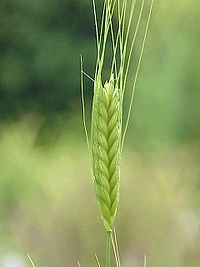
Preventing Exercise-Associated Collapse Using Online Runner Education: A Randomized, Controlled Trial.
Sign Up to like & getrecommendations! Published in 2018 at "Clinical Journal of Sport Medicine"
DOI: 10.1097/jsm.0000000000000607
Abstract: OBJECTIVE To determine whether online exercise-associated collapse (EAC) prevention education decreases medical tent EAC visits among first-time marathoners. DESIGN A prospective controlled study, with age- and sex-stratified randomization, evaluated rates of medical tent diagnosed EAC… read more here.
Keywords: education; exercise associated; eac; associated collapse ... See more keywords

Oral versus intravenous hypertonic saline for exercise‐associated hyponatraemia
Sign Up to like & getrecommendations! Published in 2017 at "Journal of Paediatrics and Child Health"
DOI: 10.1111/jpc.13521
Abstract: Exercise‐associated hyponatraemia is a potentially serious acute condition that may present early as asymptomatic or mildly symptomatic. Standard treatment is intravenous hypertonic saline, which can be challenging and carries some risk. An alternative may be… read more here.
Keywords: exercise associated; intravenous hypertonic; associated hyponatraemia; hypertonic saline ... See more keywords

Assessment of Exercise-Associated Gastrointestinal Perturbations in Research and Practical Settings: Methodological Concerns and Recommendations for Best Practice.
Sign Up to like & getrecommendations! Published in 2022 at "International journal of sport nutrition and exercise metabolism"
DOI: 10.1123/ijsnem.2022-0048
Abstract: Strenuous exercise is synonymous with disturbing gastrointestinal integrity and function, subsequently prompting systemic immune responses and exercise-associated gastrointestinal symptoms, a condition established as "exercise-induced gastrointestinal syndrome." When exercise stress and aligned exacerbation factors (i.e., extrinsic and… read more here.
Keywords: exercise associated; associated gastrointestinal; gastrointestinal perturbations; gastroenterology ... See more keywords

Regulatory T-cells and GARP expression are decreased in exercise-associated chikungunya viral arthritis flares
Sign Up to like & getrecommendations! Published in 2022 at "Frontiers in Immunology"
DOI: 10.3389/fimmu.2022.1007106
Abstract: Objective Chikungunya virus (CHIKV) causes persistent arthritis, and our prior study showed that approximately one third of CHIKV arthritis patients had exacerbated arthritis associated with exercise. The underlying mechanism of exercise-associated chikungunya arthritis flare (EACAF)… read more here.
Keywords: exercise associated; expression; arthritis; associated chikungunya ... See more keywords

An exploratory study of the management strategies reported by endurance athletes with exercise-associated gastrointestinal symptoms
Sign Up to like & getrecommendations! Published in 2022 at "Frontiers in Nutrition"
DOI: 10.3389/fnut.2022.1003445
Abstract: This exploratory study investigated endurance athletes self-reported exercise-associated gastrointestinal symptoms (Ex-GIS) and associated strategies to manage symptomology. Adult endurance athletes with a history of Ex-GIS (n = 137) participating in events ≥ 60 min completed… read more here.
Keywords: exercise associated; endurance; associated gastrointestinal; endurance athletes ... See more keywords

Effects of physical exercise associated with a diet enriched with natural antioxidants on cerebral hypoperfusion and reperfusion injury in spontaneously hypertensive rats
Sign Up to like & getrecommendations! Published in 2023 at "Frontiers in Physiology"
DOI: 10.3389/fphys.2023.1091889
Abstract: Oxidative stress is implicated in the pathogenesis of arterial hypertension. The reduction in the bioavailability of nitric oxide (NO) causes endothelial dysfunction, altering the functions of cerebral blood vessels. Physical exercise and intake of antioxidants… read more here.
Keywords: diet enriched; exercise associated; associated diet; effects physical ... See more keywords

The Influence of Exercise-Associated Small Extracellular Vesicles on Trophoblasts In Vitro
Sign Up to like & getrecommendations! Published in 2023 at "Biomedicines"
DOI: 10.3390/biomedicines11030857
Abstract: Exercise induces the release of small extracellular vesicles (sEVs) into circulation that are postulated to mediate tissue cross-talk during exercise. We previously reported that pregnant individuals released greater levels of sEVs into circulation after exercise… read more here.
Keywords: trophoblasts vitro; exercise associated; extracellular vesicles; small extracellular ... See more keywords

Exercise-Associated Hyponatremia during the Olympus Marathon Ultra-Endurance Trail Run
Sign Up to like & getrecommendations! Published in 2020 at "Nutrients"
DOI: 10.3390/nu12040997
Abstract: Research on hyponatremia during mountain marathons is scarce. The present study aimed to investigate the prevalence of exercise-associated hyponatremia during a 44-km trail running race that reached an altitude of 2780 m (Olympus Marathon). Sixty-two… read more here.
Keywords: associated hyponatremia; exercise associated; hyponatremia; olympus marathon ... See more keywords

An Evidence-Based Review of the Pathophysiology, Treatment, and Prevention of Exercise Associated Muscle Cramps.
Sign Up to like & getrecommendations! Published in 2021 at "Journal of athletic training"
DOI: 10.4085/1062-6050-0696.20
Abstract: Exercise-associated muscle cramps (EAMC) are common and frustrating for athletes and the physically active. We critically-appraised the EAMC literature to provide evidence-based treatment and prevention recommendations. While the pathophysiology of EAMC appears controversial, recent evidence… read more here.
Keywords: exercise associated; treatment; associated muscle; evidence ... See more keywords